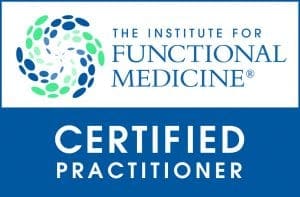The term intermittent fasting is used in a variety of eating settings. In fact, intermittent fasting can be used when describing a prolonged time in which few calories or no calories are consumed. However, its physiological effects on the human body and its metabolic benefits have been the spotlight of 2020. In fact, this global pandemic has been creating a shift in patient’s wellness and self-awareness, therefore a topic of interest in functional medicine practice.
Intermittent fasting (IF) has been a topic of interest since many decades ago. Previously, the dietary approaches to reduce weight involved calorie-restricted diets, with good outcomes. Â A moderate caloric restriction (over 6m periods) allowed the patient to reduce weight, lessen the cardiovascular risk, and improve insulin sensitivity and mitochondrial function. Nevertheless, researchers concluded that this approach was difficult to maintain over a long time, which was when the heads turned to IF
The term intermittent fasting is used in a variety of eating settings. In fact, intermittent fasting can be used when describing a prolonged time in which few calories or no calories are consumed. However, its physiological effects on the human body and its metabolic benefits have been the spotlight of 2020. In fact, this global pandemic has been creating a shift in patient’s wellness and self-awareness, therefore a topic of interest in functional medicine practice.
Intermittent fasting (IF) has been a topic of interest since many decades ago. Previously, the dietary approaches to reduce weight involved calorie-restricted diets, with good outcomes. Â A moderate caloric restriction (over 6m periods) allowed the patient to reduce weight, lessen the cardiovascular risk, and improve insulin sensitivity and mitochondrial function. Nevertheless, researchers concluded that this approach was difficult to maintain over a long time, which was when the heads turned to IF.
Table of Contents
Variations of IF
| 12 hours-fast or longer (typical approach) |
| Alternate day fasting (ADF): the patient avoids consuming calories for one day, and the next day, they eat without restriction. |
| Alternate day modified fasting (ADMF): consists of eating fewer calories for one day (<25% energy needs) and eating without restriction the next day. |
| Time-restricted feeding involves (TRF): restricting food intake to specific time periods of the day. |
| Periodic fasting (PF): This eating pattern consists of fasting only 1-2 d/wk and consuming food ad libitum on 5-6 d/wk. |
Intermittent fasting benefits
Â
- Improvement of cardiometabolic risk factors: Insulin resistance, dyslipidemia, and reduces inflammatory cytokines.
- Reduce visceral fat mass.
- Promotes weight loss.
- Improvements on lipid profiles.
- Healing thrombophlebitis.
- Healing of dermal ulcers.
- Tolerance for elective surgery.
Â
Metabolism behind IF
Â
To understand how IF can exert these benefits in the human body, we have to refer to basic metabolism and energy biochemistry. In fact, IF has been reported to shift energy metabolism, principally by flipping the preferred substate from glucose from glycogenolysis to fatty-acids and fatty-acid derived ketones. Overall, the main shift is when fat starts being mobilized for energy utilization instead of being synthesized and stored as triglycerides in adipocytes.
To be able to produce this metabolic shift, most patients need to deplete their hepatocyte glycogen storage. This occurs on the third phase of fasting, 12-36, after food intake cessation. Therefore, this action precedes a cascade in which accelerated adipose tissue lipolysis produces increased fatty acids and glycerol.
Adipocytes release their content (triacylglycerol and diacylglycerol) to get metabolized into free-fatty acids, which are then released into the bloodstream. Other cells, like astrocytes, may generate ketones and release them into the bloodstream as well. Furthermore, these components get transported to the hepatocytes and are metabolized to ketones b-hydroxybutyrate (b-OHB) and acetoacetate, which may, in turn, induce mitochondrial biogenesis.
Lastly, ketones are transported to high metabolic activity cells, like muscle and neurons, where they are metabolized to acetyl coenzyme A. Consequently, acetyl coenzyme A is the main substrate for the tricarboxylic acid cycle to generate adenosine triphosphate (ATP). This adapted metabolic “shift†is believed to be a muscle protection mechanism in times of extreme famine or intense physical activity.
Muscle preservation
Â
Nakura et al. determined that the main action of IF’s metabolic shift on muscle preservation. Their findings suggest that muscle mass stores triglycerides in lipid droplets, and when needed, they get metabolized by b-oxidation. Peroxisome proliferator-activated receptor a (PPAR-a), the transcriptional regulator, induces the expression of genes that mediate fatty acid oxidation in muscle cells and regulates muscle cell mitochondrial biogenesis and glucose metabolism. Other mediators on the metabolic shift induction are the fatty acid translocase CD36, fatty acid-binding protein 3, mitochondrial uncoupling protein 3, PGC-1a, pyruvate kinase dehydrogenase 4, and forkhead box (FOX) O1A.
Intestinal microbiota and IF
Â
Â
The benefits that IF exerts on intestinal microbiota are related to the circadian rhythm and metabolic responses. In fact, glucose load responses tend to slow down during the evening and be faster in the morning. Therefore, a disturbed circadian profile can affect gastrointestinal function, affecting digestion, metabolism, and health.
Studies performed in this matter show that jet lag has in mice and humans is linked to microbial diurnal fluctuation. Besides, these fluctuations can lead to dysbiosis, causing glucose intolerance and enabling “obese microbiota.â€
Contributing to this matter, studies report that nighttime eating is associated with reduced sleep duration and quality.
Nighttime eating:
- insulin resistance.
- Increased risk of obesity.
- Cardiovascular disease.
- Diabetes.
- Cancer.
Have you been having a good night’s sleep?
Research shows that our circadian rhythm is tightly linked to our hormone synthesis, microbiota regulation, digestion, and overall health. Take this questionnaire, find out how you are doing.
Despite all of the reported IF benefits, two that stand out the most are reducing inflammation and insulin sensitivity. The molecular and cellular mechanisms involved in IF diabetes reduction and prevention rely upon the insulin receptor’s increased function. Nevertheless, this action guarantees a rapid uptake of glucose in cells like myocytes, hepatocytes, and neurons. Also, it is reported that IF induces cellular stress, which is associated with the protection of B- cells. Lastly, IF’s anti-inflammatory effects are associated with the lack of food ingestion and metabolic processing, and overeating is proinflammatory.-Ana Paola RodrÃguez Arciniega. Master in Clinical Nutrition
References
Anton, Stephen D., et al. “Flipping the metabolic switch: understanding and applying the health benefits of fasting.” Obesity 26.2 (2018): 254-268.
Patterson, Ruth E., et al. “Intermittent fasting and human metabolic health.” Journal of the Academy of Nutrition and Dietetics 115.8 (2015): 1203-1212.
Mattson, Mark P., Valter D. Longo, and Michelle Harvie. “Impact of intermittent fasting on health and disease processes.” Aging research reviews 39 (2017): 46-58.
Dr. Alex Jimenez’s Blog Post
Disclaimer
Our information scope is limited to chiropractic, musculoskeletal, physical medicines, wellness, and sensitive health issues and functional medicine articles, topics, and discussions. We provide and present clinical collaboration with specialists from a wide array of disciplines. Each specialist is governed by their professional scope of practice and their jurisdiction of licensure. We use functional health & wellness protocols to treat and support care for the musculoskeletal system’s injuries or disorders. Our posts, topics, subjects, and insights cover clinical matters, issues, and topics that relate and support, directly or indirectly, our clinical scope of practice.* Our office has made a reasonable attempt to provide supportive citations and has identified the relevant research study or studies supporting our posts. We also make copies of supporting research studies available to the board and or the public upon request. We understand that we cover matters that require an additional explanation of how it may assist in a particular care plan or treatment protocol; therefore, to further discuss the subject matter above, please feel free to ask Dr. Alex Jimenez or contact us 915-850-0900. The provider(s) Licensed in Texas*& New Mexico*Â
General Disclaimer
Professional Scope of Practice *
The information herein on "2020’s Topics: Intermittent Fasting." is not intended to replace a one-on-one relationship with a qualified health care professional or licensed physician and is not medical advice. We encourage you to make healthcare decisions based on your research and partnership with a qualified healthcare professional.
Blog Information & Scope Discussions
Welcome to El Paso's Premier Wellness and Injury Care Clinic wellness blog, where Dr. Alex Jimenez, DC, FNP-C, a board-certified Family Practice Nurse Practitioner (FNP-C) and Chiropractor (DC), presents insights on how our team is dedicated to holistic healing and personalized care. Our practice aligns with evidence-based treatment protocols inspired by integrative medicine principles, similar to those found on dralexjimenez.com, focusing on restoring health naturally for patients of all ages.
Welcome to El Paso's Premier Wellness and Injury Care Clinic & wellness blog, where Dr. Alex Jimenez, DC, FNP-C, a board-certified Family Practice Nurse Practitioner (FNP-C) and Chiropractor (DC), presents insights on how our team is dedicated to holistic healing and personalized care. Our practice aligns with evidence-based treatment protocols inspired by integrative medicine principles, similar to those found on dralexjimenez.com, focusing on restoring health naturally for patients of all ages.
Our areas of chiropractic practice include Wellness & Nutrition, Chronic Pain, Personal Injury, Auto Accident Care, Work Injuries, Back Injury, Low Back Pain, Neck Pain, Migraine Headaches, Sports Injuries, Severe Sciatica, Scoliosis, Complex Herniated Discs, Fibromyalgia, Chronic Pain, Complex Injuries, Stress Management, Functional Medicine Treatments, and in-scope care protocols.
Our information scope is limited to chiropractic, musculoskeletal, physical medicine, wellness, contributing etiological viscerosomatic disturbances within clinical presentations, associated somato-visceral reflex clinical dynamics, subluxation complexes, sensitive health issues, and functional medicine articles, topics, and discussions.
We provide and present clinical collaboration with specialists from various disciplines. Each specialist is governed by their professional scope of practice and their jurisdiction of licensure. We use functional health & wellness protocols to treat and support care for the injuries or disorders of the musculoskeletal system.
Our videos, posts, topics, subjects, and insights cover clinical matters, issues, and topics that relate to and directly or indirectly support our clinical scope of practice.*
Our office has reasonably attempted to provide supportive citations and has identified the relevant research studies or studies supporting our posts. We provide copies of supporting research studies available to regulatory boards and the public upon request.
We understand that we cover matters that require an additional explanation of how they may assist in a particular care plan or treatment protocol; therefore, to discuss the subject matter above further, please feel free to ask Dr. Alex Jimenez, DC, APRN, FNP-BC, or contact us at 915-850-0900.
We are here to help you and your family.
Blessings
Dr. Alex Jimenez DC, MSACP, APRN, FNP-BC*, CCST, IFMCP, CFMP, ATN
email: coach@elpasofunctionalmedicine.com
Licensed as a Doctor of Chiropractic (DC) in Texas & New Mexico*
Texas DC License # TX5807
New Mexico DC License # NM-DC2182
Licensed as a Registered Nurse (RN*) in Texas & Multistate
Texas RN License # 1191402
ANCC FNP-BC: Board Certified Nurse Practitioner*
Compact Status: Multi-State License: Authorized to Practice in 40 States*
Graduate with Honors: ICHS: MSN-FNP (Family Nurse Practitioner Program)
Degree Granted. Master's in Family Practice MSN Diploma (Cum Laude)
Dr. Alex Jimenez, DC, APRN, FNP-BC*, CFMP, IFMCP, ATN, CCST
My Digital Business Card




















